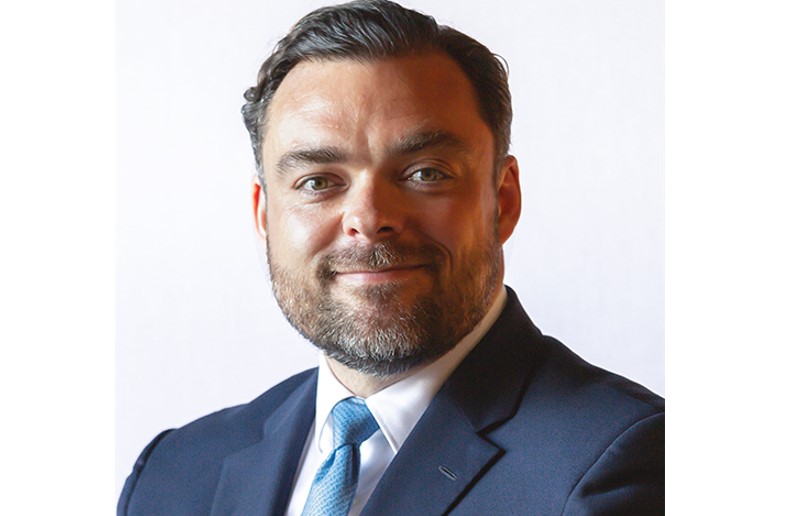The Taper Tantrum 2022 is Underway
| By Cecilia Prieto | 0 Comentarios

The U.S. stock market started 2022 with the S&P 500 hitting an intraday record high on January 4 as the Omicron variant’s disease severity was downgraded. The next day, when the minutes of the December 15 FOMC meeting revealed a tightening bias that included the “run off” of the Fed’s $9 trillion balance sheet, the financial markets turned negative abruptly. Stocks declined sharply and the ten-year U.S. Note yield spiked higher. ‘Taper Tantrum’ 2022 was underway.
So far, how does the May 2013 Bernanke quantitative tightening surprise compare? To date 2022, the S&P 500 is down 5.6% vs 4.9% in 2013 and the ten-year U.S. Treasury yield is 27% higher vs 35% in 2013. In 1955, Fed Chairman Martin said the Fed’s job is ‘to take away the punch bowl just as the party gets going.’ How will Jerome Powell compare to Paul Volcker? On Saturday, Oct. 6, 1979, Fed Chairman Volcker held an impromptu evening news conference, dubbed the ‘Saturday Night Massacre.’ Mr. Volcker declared war on inflation and announced the Fed’s monetary policy would now control interest rates by targeting the money supply, with markets setting interest rates. The post-war Keynesian era of big government run economic policy was fading.
Job creation estimates for the January U.S. payrolls report released on February 4 were far below the actual data as the labor market recovery strengthened and the Omicron surge slowed. Bottom line: the U.S. job market is tight and wages are rising. The FOMC’s December 15 minutes also said the job market is ‘very tight.’ The next inflation data release is the CPI estimated to have annualized at 7.3%, the largest rise since 1982 when Mr. Volcker was ‘slaying the inflationary dragon.’
Market volatility remained throughout the month of January, with the S&P 500 declining as much as 11.5% for the month, while the technology-heavy Nasdaq slid as much as 16%. The volatility spilled over into merger arbitrage markets where spreads widened as investors’ risk appetites were tested, and downsides recalibrated. Despite volatility in markets, widened merger arbitrage spreads, and regulatory setbacks, we come out of a challenging month optimistic about the opportunities ahead. M&A activity remains robust in 2022 including the announced acquisition of Activision by Microsoft for $74 billion, and the acquisition of Citrix Systems by Vista Equity for $17 billion.
January was a difficult month across the markets and convertibles were no exception. With growth multiples moving lower, many equity sensitive convertibles moved lower with stocks. Additionally, with interest rates rising, the fixed income equivalents in the market trended lower as well. While this hurt performance for the month, we believe it presents an opportunity as there are now some convertibles trading at more attractive levels than they have in some time, and underlying equity valuations have become more reasonable.
We are of the mind that security selection will be key to performance this year. Typically convertibles do well in a rising interest rate environment, but there are two factors that could cause things to be somewhat different this time. First is the large amount of convertibles with 0 yield and high premium. Most of these are trading below par and are now considered a fixed income equivalent. These will be weak in a rising interest rate environment as investors demand greater yield to maturity. Additionally, given the majority of convert issuers are growth oriented, a continued re-rating of growth stock multiples could weigh on the equity sensitive side of the market. Given that backdrop our focus remains on total return convertibles with some high conviction equity sensitive names.
______________________________________
To access our proprietary value investment methodology, and dedicated merger arbitrage portfolio we offer the following UCITS Funds in each discipline:
GAMCO MERGER ARBITRAGE
GAMCO Merger Arbitrage UCITS Fund, launched in October 2011, is an open-end fund incorporated in Luxembourg and compliant with UCITS regulation. The team, dedicated strategy, and record dates back to 1985. The objective of the GAMCO Merger Arbitrage Fund is to achieve long-term capital growth by investing primarily in announced equity merger and acquisition transactions while maintaining a diversified portfolio. The Fund utilizes a highly specialized investment approach designed principally to profit from the successful completion of proposed mergers, takeovers, tender offers, leveraged buyouts and other types of corporate reorganizations. Analyzes and continuously monitors each pending transaction for potential risk, including: regulatory, terms, financing, and shareholder approval.
Merger investments are a highly liquid, non-market correlated, proven and consistent alternative to traditional fixed income and equity securities. Merger returns are dependent on deal spreads. Deal spreads are a function of time, deal risk premium, and interest rates. Returns are thus correlated to interest rate changes over the medium term and not the broader equity market. The prospect of rising rates would imply higher returns on mergers as spreads widen to compensate arbitrageurs. As bond markets decline (interest rates rise), merger returns should improve as capital allocation decisions adjust to the changes in the costs of capital.
Broad Market volatility can lead to widening of spreads in merger positions, coupled with our well-researched merger portfolios, offer the potential for enhanced IRRs through dynamic position sizing. Daily price volatility fluctuations coupled with less proprietary capital (the Volcker rule) in the U.S. have contributed to improving merger spreads and thus, overall returns. Thus our fund is well positioned as a cash substitute or fixed income alternative.
Our objectives are to compound and preserve wealth over time, while remaining non-correlated to the broad global markets. We created our first dedicated merger fund 32 years ago. Since then, our merger performance has grown client assets at an annualized rate of approximately 10.7% gross and 7.6% net since 1985. Today, we manage assets on behalf of institutional and high net worth clients globally in a variety of fund structures and mandates.
Class I USD – LU0687944552
Class I EUR – LU0687944396
Class A USD – LU0687943745
Class A EUR – LU0687943661
Class R USD – LU1453360825
Class R EUR – LU1453361476
GAMCO ALL CAP VALUE
The GAMCO All Cap Value UCITS Fund launched in May, 2015 utilizes Gabelli’s its proprietary PMV with a Catalyst™ investment methodology, which has been in place since 1977. The Fund seeks absolute returns through event driven value investing. Our methodology centers around fundamental, research-driven, value based investing with a focus on asset values, cash flows and identifiable catalysts to maximize returns independent of market direction. The fund draws on the experience of its global portfolio team and 35+ value research analysts.
GAMCO is an active, bottom-up, value investor, and seeks to achieve real capital appreciation (relative to inflation) over the long term regardless of market cycles. Our value-oriented stock selection process is based on the fundamental investment principles first articulated in 1934 by Graham and Dodd, the founders of modern security analysis, and further augmented by Mario Gabelli in 1977 with his introduction of the concepts of Private Market Value (PMV) with a Catalyst™ into equity analysis. PMV with a Catalyst™ is our unique research methodology that focuses on individual stock selection by identifying firms selling below intrinsic value with a reasonable probability of realizing their PMV’s which we define as the price a strategic or financial acquirer would be willing to pay for the entire enterprise. The fundamental valuation factors utilized to evaluate securities prior to inclusion/exclusion into the portfolio, our research driven approach views fundamental analysis as a three pronged approach: free cash flow (earnings before, interest, taxes, depreciation and amortization, or EBITDA, minus the capital expenditures necessary to grow/maintain the business); earnings per share trends; and private market value (PMV), which encompasses on and off balance sheet assets and liabilities. Our team arrives at a PMV valuation by a rigorous assessment of fundamentals from publicly available information and judgement gained from meeting management, covering all size companies globally and our comprehensive, accumulated knowledge of a variety of sectors. We then identify businesses for the portfolio possessing the proper margin of safety and research variables from our deep research universe.
Class I USD – LU1216601648
Class I EUR – LU1216601564
Class A USD – LU1216600913
Class A EUR – LU1216600673
Class R USD – LU1453359900
Class R EUR – LU1453360155
GAMCO CONVERTIBLE SECURITIES
GAMCO Convertible Securities’ objective is to seek to provide current income as well as long term capital appreciation through a total return strategy by investing in a diversified portfolio of global convertible securities.
The Fund leverages the firm’s history of investing in dedicated convertible security portfolios since 1979.
The fund invests in convertible securities, as well as other instruments that have economic characteristics similar to such securities, across global markets (but the fund will not invest in contingent convertible notes). The fund may invest in securities of any market capitalization or credit quality, including up to 100% in below investment grade or unrated securities, and may from time to time invest a significant amount of its assets in securities of smaller companies. Convertible securities may include any suitable convertible instruments such as convertible bonds, convertible notes or convertible preference shares.
By actively managing the fund and investing in convertible securities, the investment manager seeks the opportunity to participate in the capital appreciation of underlying stocks, while at the same time relying on the fixed income aspect of the convertible securities to provide current income and reduced price volatility, which can limit the risk of loss in a down equity market.
Class I USD LU2264533006
Class I EUR LU2264532966
Class A USD LU2264532701
Class A EUR LU2264532610
Class R USD LU2264533345
Class R EUR LU2264533261
Class F USD LU2264533691
Class F EUR LU2264533428
Disclaimer:
The information and any opinions have been obtained from or are based on sources believed to be reliable but accuracy cannot be guaranteed. No responsibility can be accepted for any consequential loss arising from the use of this information. The information is expressed at its date and is issued only to and directed only at those individuals who are permitted to receive such information in accordance with the applicable statutes. In some countries the distribution of this publication may be restricted. It is your responsibility to find out what those restrictions are and observe them.
Some of the statements in this presentation may contain or be based on forward looking statements, forecasts, estimates, projections, targets, or prognosis (“forward looking statements”), which reflect the manager’s current view of future events, economic developments and financial performance. Such forward looking statements are typically indicated by the use of words which express an estimate, expectation, belief, target or forecast. Such forward looking statements are based on an assessment of historical economic data, on the experience and current plans of the investment manager and/or certain advisors of the manager, and on the indicated sources. These forward looking statements contain no representation or warranty of whatever kind that such future events will occur or that they will occur as described herein, or that such results will be achieved by the fund or the investments of the fund, as the occurrence of these events and the results of the fund are subject to various risks and uncertainties. The actual portfolio, and thus results, of the fund may differ substantially from those assumed in the forward looking statements. The manager and its affiliates will not undertake to update or review the forward looking statements contained in this presentation, whether as result of new information or any future event or otherwise.









